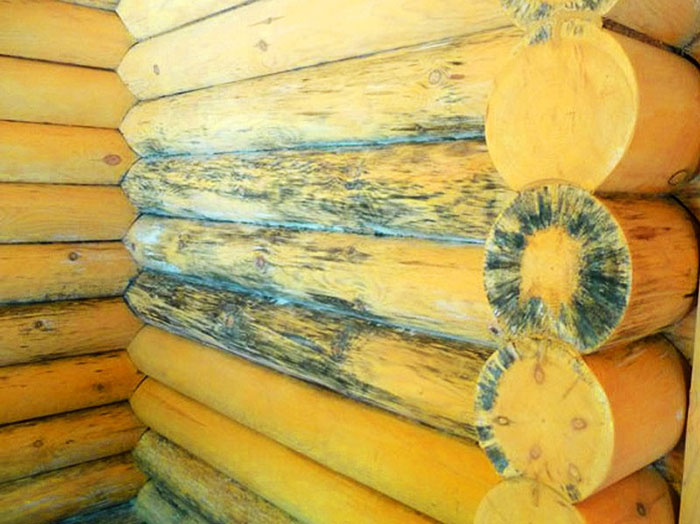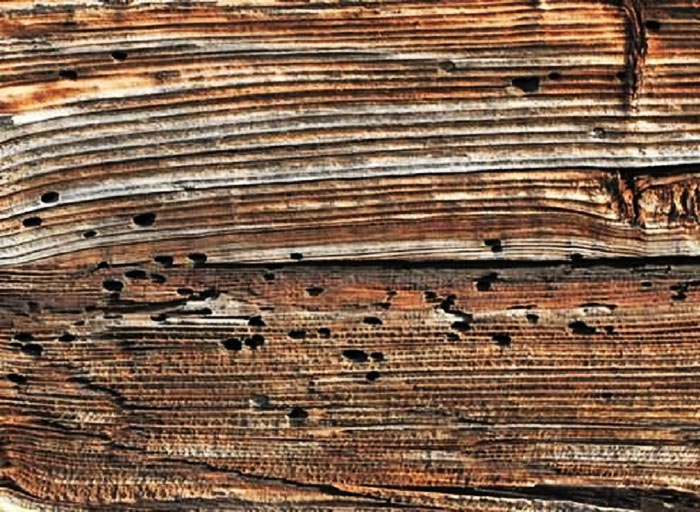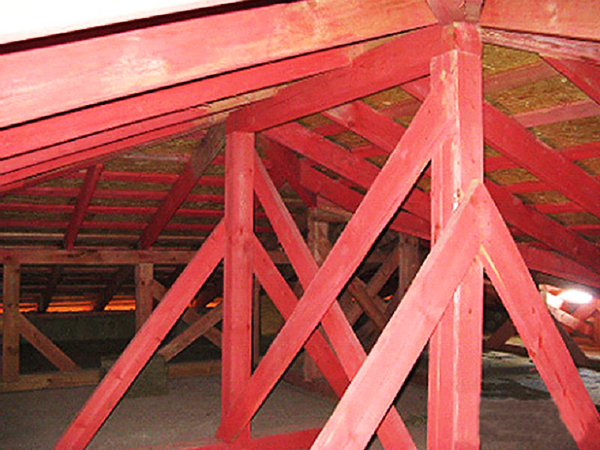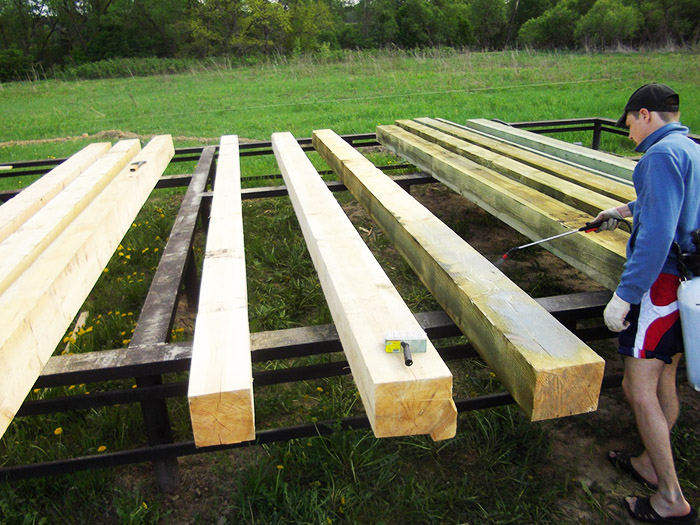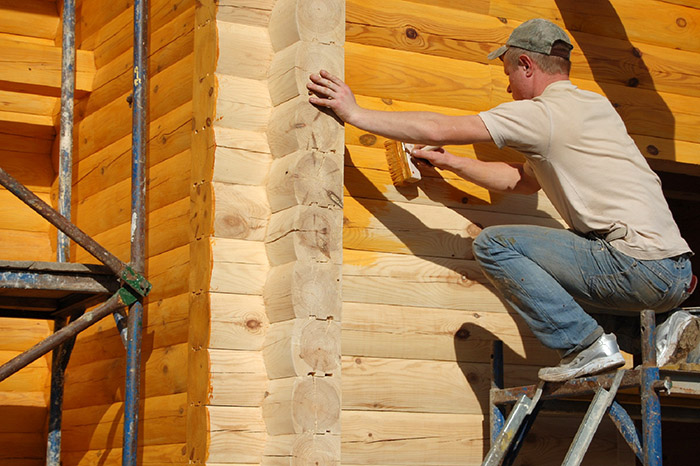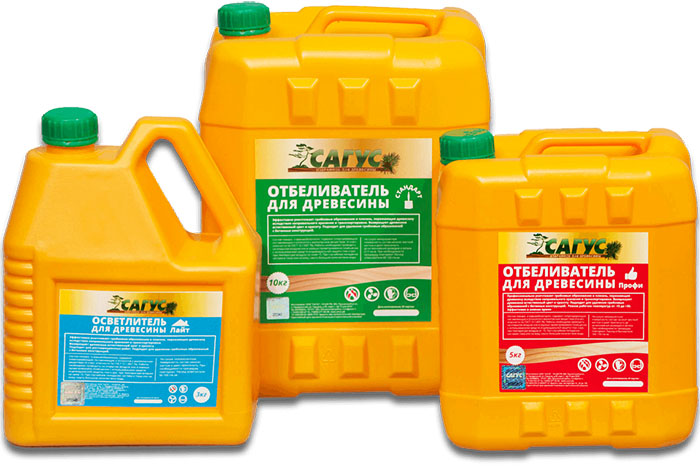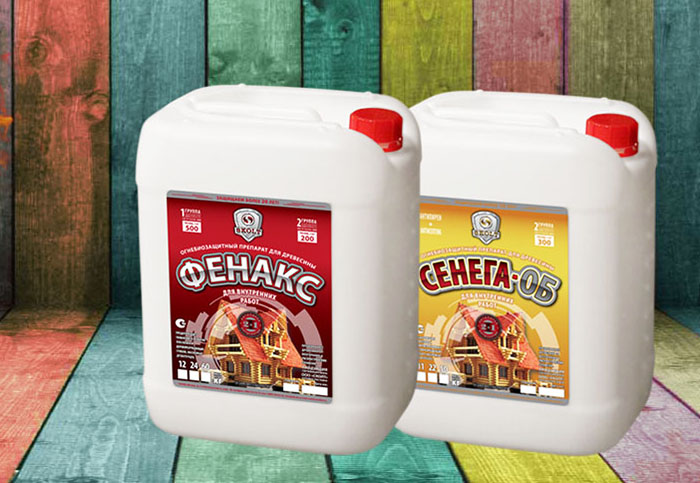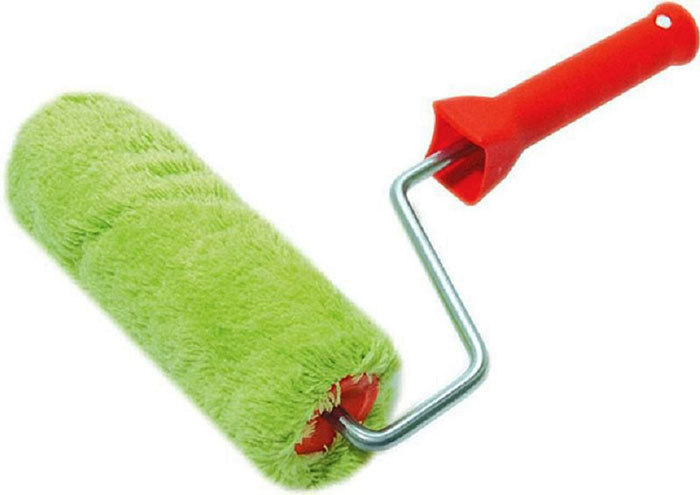How to choose a wood preservative: helpful tips
Wood is one of the most common building and construction materials. However, wood is very sensitive to external influences, in particular, to atmospheric factors and biological damage. All of these threats are confronted with a wide range of antiseptics. In this article, we will tell you how to choose a wood preservative, consider their varieties, advantages and disadvantages, and give a brief overview of the main manufacturers and their products. Let's describe the main methods of application and typical mistakes made in this case.
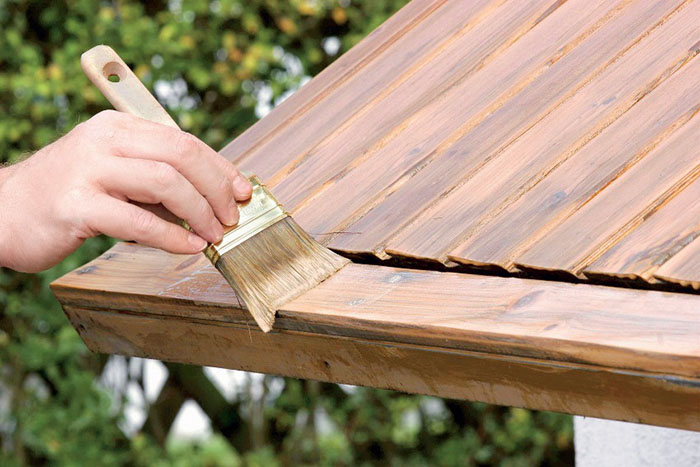
One of the main conditions for increasing the service life of wooden structures is their treatment with antiseptic substances.
PHOTO: remoo.ru
The content of the article [Hide]
- 1 The principle of operation and advantages of using an antiseptic
- 2 Classification of wood preservatives
- 3 Popular manufacturers
- 4 The best antiseptics and the specificity of their use
- 5 The choice of antiseptic preparations for wood
- 6 Wood treatment methods with antiseptic
- 7 General recommendations for use
- 8 conclusions
- 9 Video: how to choose a wood preservative
The principle of operation and advantages of using an antiseptic
To prevent or minimize negative external influences, timber treated with special compounds - antiseptics. However, wooden structures are operated with fluctuations in temperature and humidity, ultraviolet radiation. In addition, the list of diseases and pests is also very diverse:
Almost all antiseptic agents contain the following active substances:
All antiseptics are produced in the form of liquid emulsions. The better the penetration effect of the composition, the higher the level of protection it provides.
The use of antiseptics significantly improves the performance of wood and provides the following benefits:
Classification of wood preservatives
Wood preservatives on the market are classified according to the following characteristics:
Base type (composition)
Depending on the base material, there are several types of antiseptics.
Appointment
Depending on the main purpose, there are two main types of antiseptic agents.
Application area
Depending on the area of application, antiseptics are usually divided into two types:
For internal work, a dense film is formed on the surface of the base, blocking the entry of chemicals into the atmosphere. Resistant to external influences, including abrasion, high humidity and household chemicals. Usually such funds are distinguished by their high cost.

Wooden structures of premises with variable temperature and humidity conditions are especially in need of antiseptic treatment
PHOTO: encrypted-tbn0.gstatic.com
For external work, they are distinguished by a high concentration of active substances. Often they have an unpleasant odor that does not disappear even after complete drying. It takes 1.5-2 months to weather it.
Popular manufacturers
There are many formulations from various manufacturers on the construction chemistry market. Many of them are affordable and promise the user protection of wood from almost all types of lesions. However, such products can be aggressive and hazardous to human health through daily contact.Safe and effective means of protection are usually produced by branded companies specializing in paints and varnishes and construction chemicals.
The best antiseptics and the specificity of their use
In an effort to provide maximum protection of wood from various external factors, manufacturers have developed many universal and specialized formulations.
With the effect of bleaching wood. They restore the natural color and texture of the affected areas, prevent the formation and spread of saprophytes. Bioshield 1/2 (Latek), Standard, Pro, Light (Sagus) - for household use. Prosept 50, Neomid 440/430 Eco - concentrates with whitening and healing effects.
Protective agent against mold, parasitic microflora, fungus. PAF-LST, Senezh-BIO, (Senezh) Base, Impregnant, Belocid, Belbor fix (Belinka) It is produced both in ready-to-use solutions and in concentrates.
Universal means of biofire protection - Ognebio Prof and Senezh Ognebio (Senezh), Neomid 450-1 / 450 (Neomid).
Antiseptics with additional UV protection - Senezh Aquadecor (Senezh), Biofa 2108 (BIOFA).
Antiseptics with moisture protection effect for outdoor use - Valtti Aquakolor (Tikkurila), Pinotex Terrace Oil (Akzonobel).
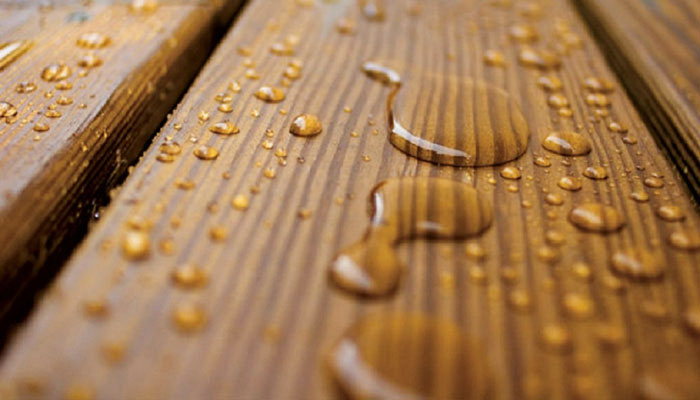
Moisture-repellent effect after treatment with antiseptic impregnations
PHOTO: encrypted-tbn0.gstatic.com
Moisture-protective antiseptics for wet rooms (baths, saunas) - KRASULA (NPO NORT LLC), Senezh Insa, Senezh Trans (Senezh), Neomid 46/420 (Neomid), Prosept-46.
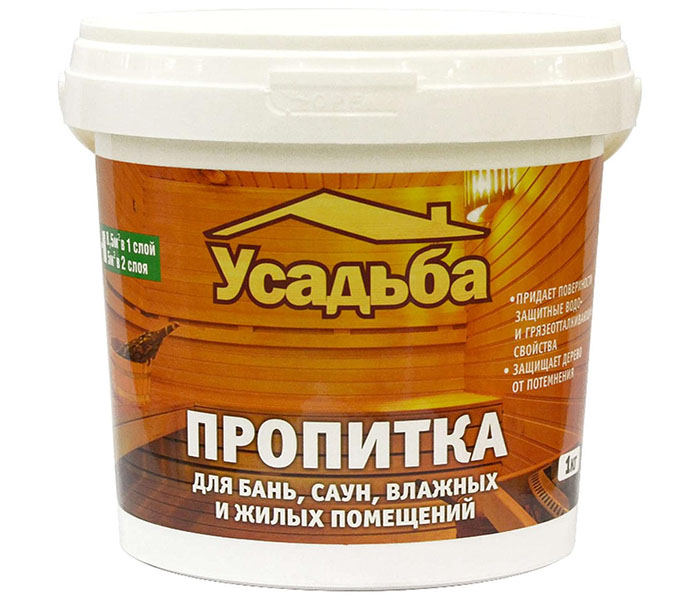
Antiseptic impregnation for a bath, in addition to magnetic properties, is resistant to high temperatures and humidity
PHOTO tiu.ru
The choice of antiseptic preparations for wood
For the most effective protection of building structures made of wood, it is necessary to select the optimal type of antiseptic impregnation. To do this, you need to analyze a number of important characteristics, which are listed below.
Method and degree of exposure. Distinguish between universal and specialized formulations with additional effects. For domestic use and in private construction, universal compounds are usually used that protect against a wide range of biological lesions. However, they are rather an addition to the main method of wood protection - painting or plastering. Specialized tools are more effective, but more expensive.
External effect. Depending on the characteristics of external influence on wood, the following types of impregnation are distinguished:
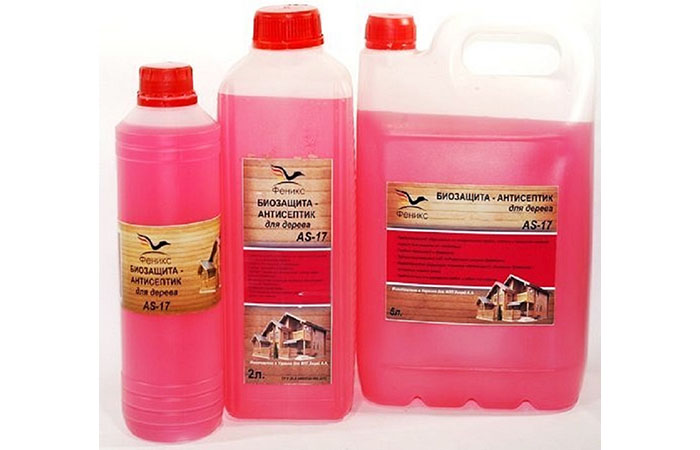
When treated with an antiseptic, the wood is stained, which helps to identify untreated areas
PHOTO fortinvest.ibud.ua
By the degree of penetration.There are external compounds that penetrate into the fibers by no more than 2-3 mm, and deep penetration impregnations that penetrate into the material up to 10 mm. It should be remembered about the own hygroscopicity of wood species:
Wood treatment methods with antiseptic
All antiseptic agents are sold in the form of liquid formulations, concentrates that must be diluted with water, or ready-made emulsions. They can be applied in several ways, similar to paints and varnishes.
Brush
Applying an antiseptic with a paint brush is a rather lengthy but most economical treatment. It makes it possible to qualitatively cover corners, joints of parts and hard-to-reach areas with a liquid composition. Recommended for small surfaces. It is allowed to use for antiseptic mixtures of any type, both deep penetration and external.
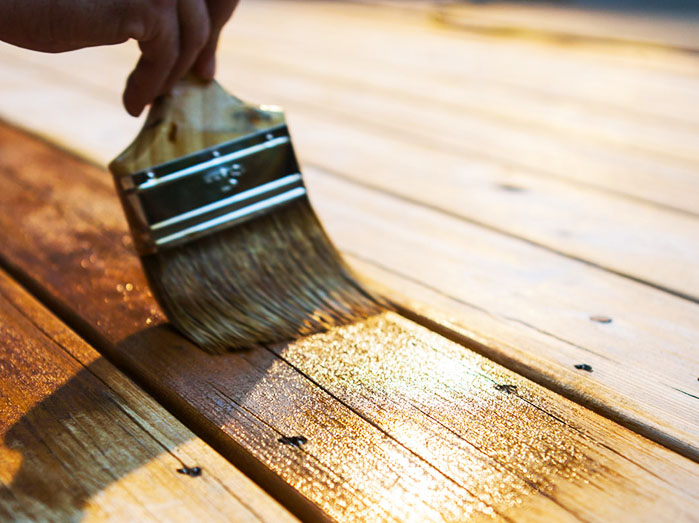
Brushing is one of the easiest processing methods and can be done with your own hands.
PHOTO: astroyresurs.ru
Roller
It is used when processing medium-sized structures with a flat and straight surface. It is recommended to use thread or fur rollers. Usually, with their help, matting or coloring impregnations are applied. When performing work, use a plastic tray to ensure uniform application.
Spray
Designed for processing large areas. With its help, it is possible to process both flat surfaces and structures of complex shape with a uniform layer. Antiseptic consumption is slightly higher than with manual processing.
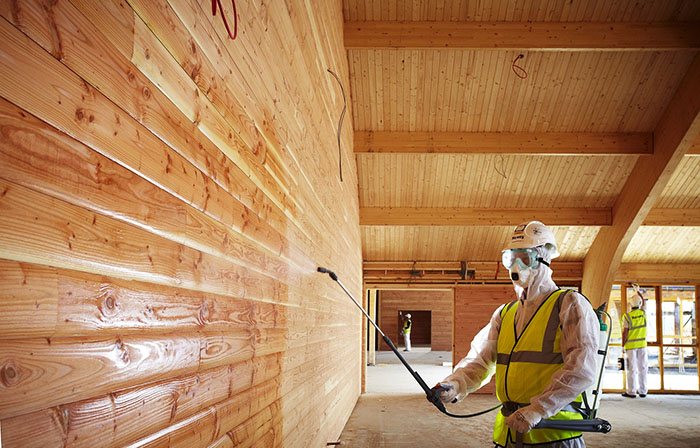
With the help of sprayers, impregnations are most often applied on a water and organic basis.
PHOTO: azurka.ru
Immersion
This option provides a high degree of protection for timber structures. Not only small parts are processed this way. To immerse long products (boards, beams, beams) directly at the construction site, a trench is dug in the ground, laid out with a film and filled with an antiseptic. The disadvantage of this method is the high consumption of antiseptic substances.
Autoclaving
Provides maximum protection. The antiseptic penetrates deep into the wood under pressure. It is used exclusively in enterprises.
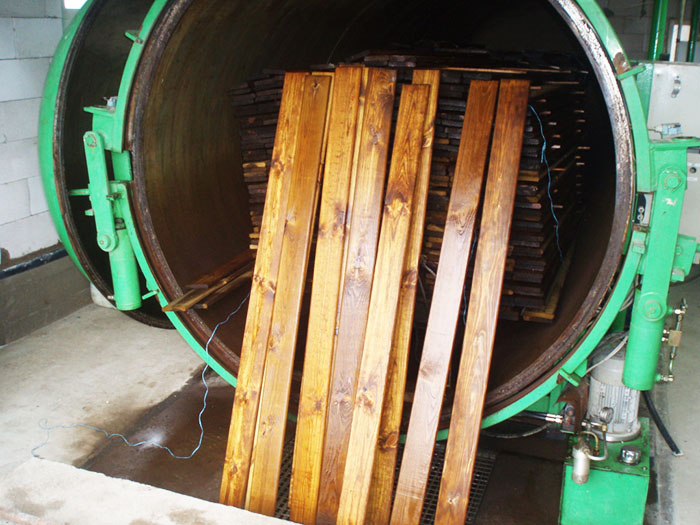
Impregnation of lumber with an antiseptic in an autoclave guarantees maximum protection against biological corrosion
PHOTO autoclave.com
General recommendations for use
In order for the effect of antiseptic agents on wood to be as effective as possible, treatment should be carried out in accordance with the following recommendations:
conclusions
Wood treatment with an antiseptic is the main way to increase the service life of wooden building structures. In addition, modern antiseptic compositions make it possible to restore the original appearance of some affected areas, and can also act as decorative coatings.
Video: how to choose a wood preservative




